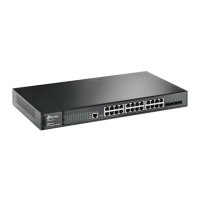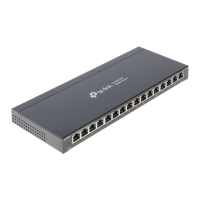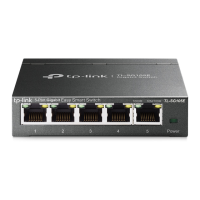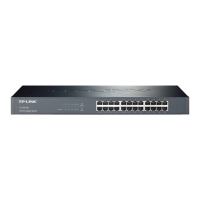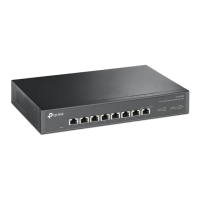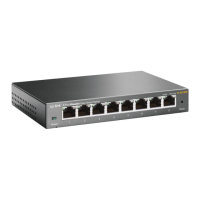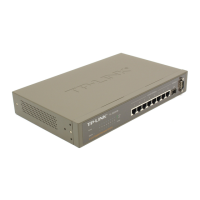Configuring Spanning Tree STP/RSTP Configurations
User Guide
393
MCheck Select whether to perform MCheck operations on the port. If a port on an
RSTP-enabled/MSTP-enabled device is connected to an STP-enabled
device, the port will switch to STP compatible mode and send packets in STP
format. MCheck is used to switch the mode of the port back to RSTP/MSTP
after the port is disconnected from the STP-enabled device. The MCheck
configuration can take effect only once, after that the MCheck status of the
port will switch to Disabled.
Port Mode Displays the spanning tree mode of the port.
STP: The spanning tree mode of the port is STP.
RSTP: The spanning tree mode of the port is RSTP.
MSTP: The spanning tree mode of the port is MSTP.
Port Role Displays the role that the port plays in the spanning tree.
Root Port: Indicates that the port is the root port in the spanning tree. It
has the lowest path cost from the root bridge to this switch and is used to
communicate with the root bridge.
Designated Port: Indicates that the port is the designated port in the
spanning tree. It has the lowest path cost from the root bridge to this
physical network segment and is used to forward data for the corresponding
network segment.
Alternate Port: Indicates that the port is the alternate port in the spanning
tree. It is the backup of the root port or master port.
Backup Port: Indicates that the port is the backup port in the spanning tree.
It is the backup of the designated port.
Disabled: Indicates that the port is not participating in the spanning tree.
Port Status Displays the port status.
Forwarding: The port receives and sends BPDUs, and forwards user data.
Learning: The port receives and sends BPDUs. It also receives user traffic,
but doesn’t forward the traffic.
Blocking: The port only receives and sends BPDUs.
Disconnected: The port has the spanning tree function enabled but is not
connected to any device.
LAG Displays the LAG the port belongs to.
2) Click Apply.
2.1.2 Configuring STP/RSTP Globally
Choose the menu L2 FEATURES > Spanning Tree > STP Config > STP Config to load the
following page.
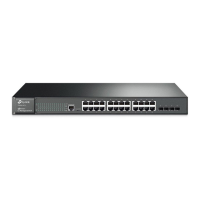
